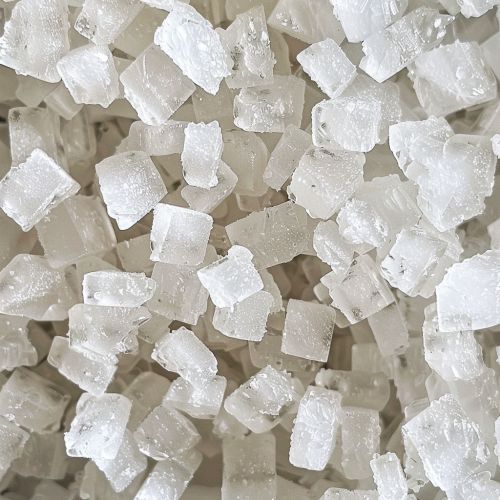Erythritol
Introduction
Erythritol is a sugar alcohol that has been approved for use as a food additive in the United States and throughout much of the world. It occurs naturally in some fruit and fermented foods. At the industrial level, it is produced from glucose by fermentation with a yeast, Moniliella pollinis. Erythritol is 60–70% as sweet as sucrose (table sugar), yet it is almost noncaloric, does not affect blood sugar, does not cause tooth decay, and is partially absorbed by the body, excreted in urine and feces. It is less likely to cause gastric side effects than other sugar alcohols because of its unique digestion pathway.
History
Erythritol was discovered in 1848 by British chemist John Stenhouse. It was first isolated in 1852. In the early 1990s, it was introduced to the market as a natural sugar substitute. It has been approved for use as a food additive in the United States since 1997.
Production
Erythritol is produced industrially beginning with enzymatic hydrolysis of the starch from corn to generate glucose. Glucose is then fermented with yeast or another fungus to produce erythritol. These processes can take place in a typical fermentation vat. The product is then filtered, and erythritol is isolated and purified.


Properties
Erythritol is a white crystalline powder that is odorless, with a clean sweet taste that is similar to sucrose. It is approximately 70% as sweet as sucrose and flows easily due to its non-hygroscopic character. Like other polyols, erythritol does not promote tooth decay and is safe for people with diabetes. However, erythritol's caloric value of 0.2 calories per gram and high digestive tolerance distinguishes it from some other polyols. It has approximately 7 to 13% the caloric value of other polyols and 5% the caloric value of sucrose.
Health and Safety
Erythritol has a strong safety profile as a low-calorie sweetener. In the body, erythritol is absorbed into the bloodstream in the small intestine, and then for the most part excreted unchanged in the urine. About 90% of erythritol is absorbed before it enters the large intestine. Therefore, erythritol is less likely to cause gastric side effects than other sugar alcohols. However, large amounts can cause nausea, stomachache and diarrhea, particularly when erythritol is consumed in liquid form.
Uses
Erythritol has been used in the food and beverage industry as a sugar substitute. It is found in a variety of foods, including some sugar-free and diet products. Erythritol has a high tolerance level and does not cause a laxative effect as severe as some other sugar alcohols. It is also used in baking and cooking, as it does not break down or lose its sweetness when heated. Erythritol also has a clean, sweet taste that is similar to sugar with no aftertaste.
